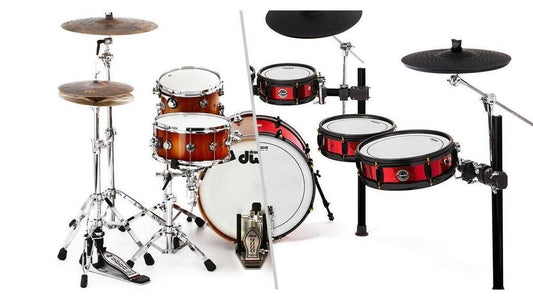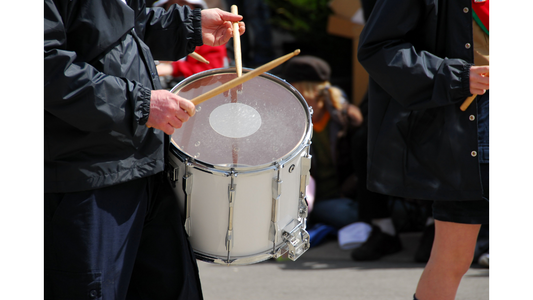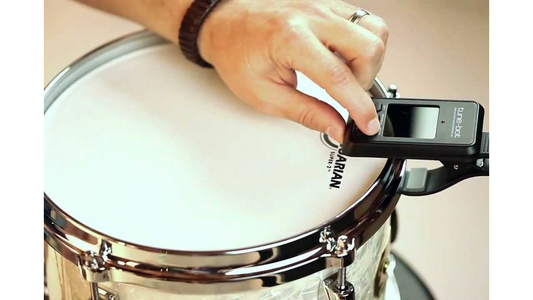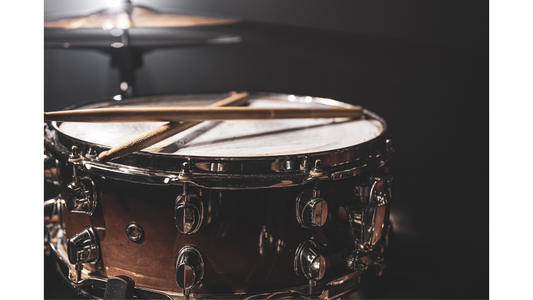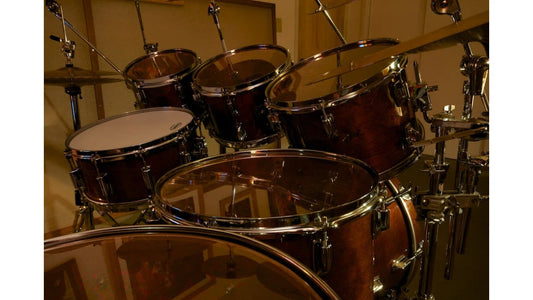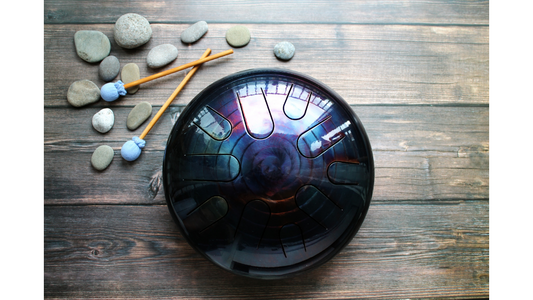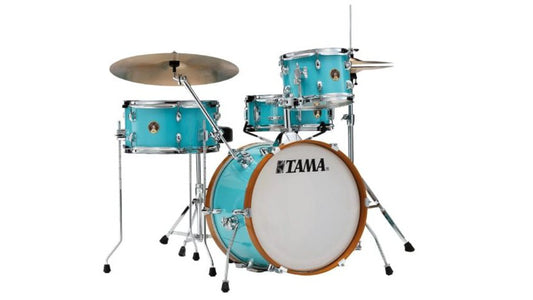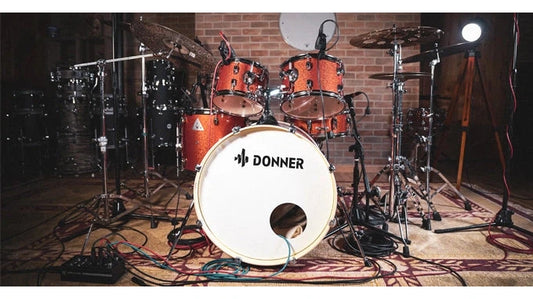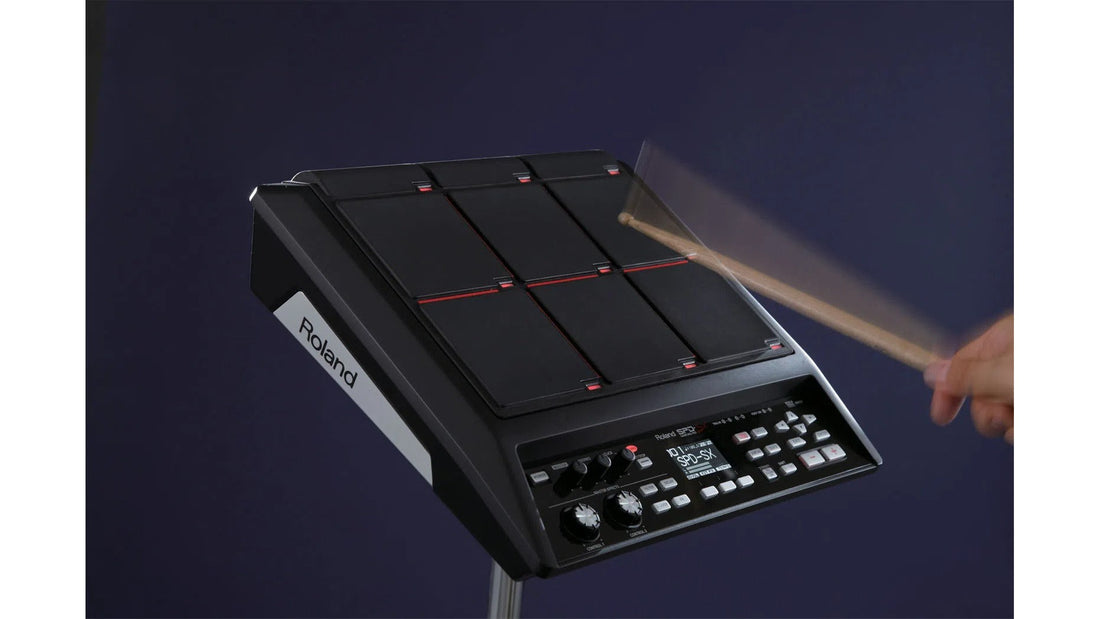
Hướng Dẫn Thiết Lập Trống Lai (Hybrid) Cho Người Bắt Đầu
Chơi trống lai (kết hợp - hybrid) là một lựa chọn phổ biến của nhiều tay trống, dành cho những nghệ sĩ thành công nhất bắt kịp xu hướng kết hợp – từ Tony Royster Jr của Katy Perry đến tay trống sống của Little Simz' Emanuel J Burton, người từng đoạt giải Brit.
Việc áp dụng thiết lập kết hợp mang đến cho bạn cơ hội tạo ra hầu như bất kỳ âm thanh nào có thể tưởng tượng được, mở ra vô số khả năng chơi. Do tính phổ biến của nó, chúng tôi đã tổng hợp một hướng dẫn hữu ích để giúp bạn bắt đầu hành trình đánh trống kết hợp của mình.
TRỐNG LAI (HYBRID) LÀ GÌ?
Thiết lập kết hợp đã phát triển từ những ngày đầu của trống điện tử, thu hẹp khoảng cách giữa trống cơ và trống điện để mang đến nhiều loại âm thanh và kết cấu. Kiểu thiết lập này cho phép bạn kết hợp âm thanh acoustic và cảm nhận với các cơ hội âm thanh điện tử không giới hạn.
Thường được sử dụng như một cách để đạt được âm thanh gần với bản nhạc đã ghi, tiếng trống lai là một cách rất phổ biến để những người chơi trống khám phá. Trong khi độ chính xác là một lý do khiến các tay trống chọn kết hợp, thì khả năng tạo lớp và tinh chỉnh âm thanh trống của bạn lại là một lý do khác.
Không giống như cách thiết lập tiêu chuẩn, tính năng đánh trống kết hợp cho phép bạn thêm các mẫu điện tử và vòng lặp vào màn trình diễn của mình, thường tạo ra âm thanh mạnh mẽ và thú vị để mang đến cho bạn nhiều lựa chọn. Tiếng trống kết hợp cũng mang đến cơ hội chuyển đổi từ acoustic sang điện chỉ bằng một nút bấm, mở ra một thế giới hoàn toàn mới về khả năng cho tay trống biểu diễn.
TÔI CẦN GÌ ĐỂ BẮT ĐẦU?
Một thiết lập kết hợp điển hình bao gồm một bộ trống tiêu chuẩn kết hợp với bộ kích hoạt trống, miếng đệm trống và miếng đệm mẫu. Sau đó, các bộ kích hoạt và miếng đệm này được liên kết với một mô-đun trống để cung cấp âm thanh trống điện tử. Một số tay trống sử dụng một trong những phương pháp này trong khi những người khác sử dụng kết hợp cả hai, cách thiết lập mà bạn sử dụng hoàn toàn phụ thuộc vào những gì bạn yêu cầu.
Trước khi học nghệ thuật đánh trống lai, bạn phải chọn thiết bị phù hợp với nhu cầu chơi của mình. Với mỗi công nghệ nói trên đều có các tính năng và lợi ích khác nhau có thể tác động tích cực đến thiết lập của bạn. Nhu cầu chơi cá nhân của bạn sẽ xác định loại thiết bị nào là tốt nhất cho bạn. Ở đây chúng tôi đã chia nhỏ từng thiết bị cần thiết cho thiết lập kết hợp và những gì chúng có thể mang lại cho bạn khi chơi.
BỘ KÍCH HOẠT TRỐNG (DRUM TRIGGER)
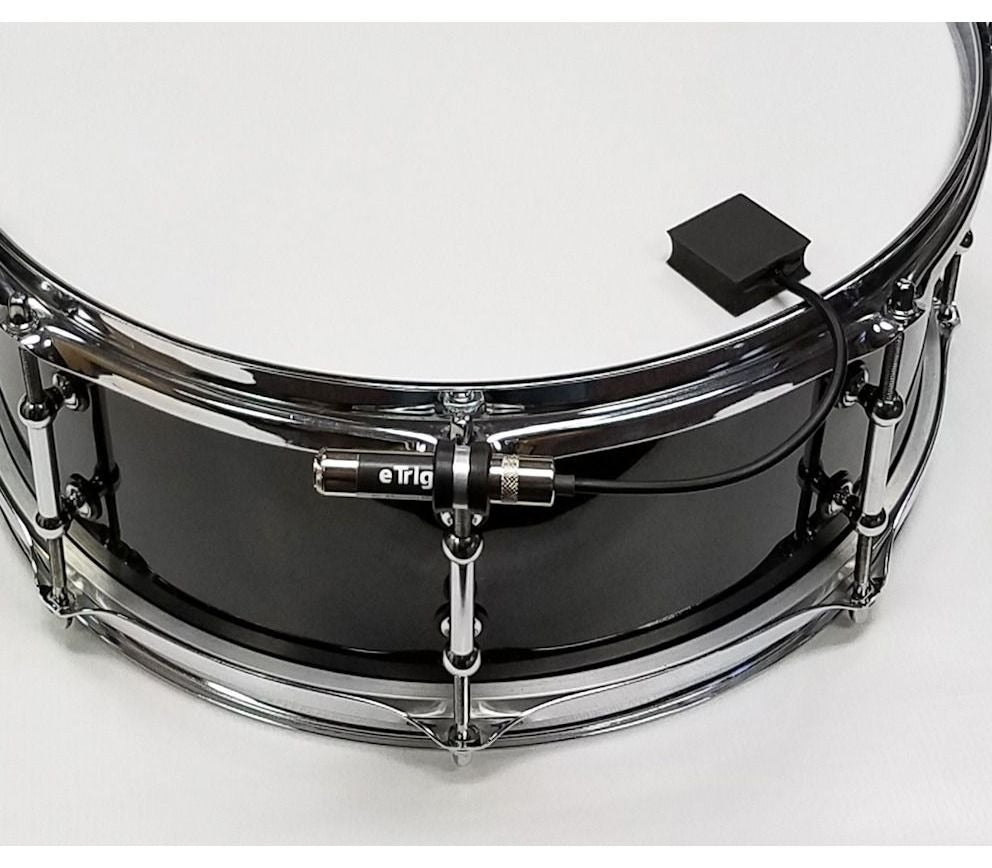
Bộ kích hoạt trống là thiết bị nhỏ gắn vào mặt bên của vòng đệm trống hiện tại của bạn hoặc gắn trực tiếp vào mặt trống. Chúng có nhiều hình dạng và kích cỡ khác nhau, tất cả đều có các tính năng tương tự nhau.
Đúng như tên gọi, bộ kích hoạt trống có một cảm biến nằm trên mặt trống acoustic, phát hiện bất kỳ rung động nào của mặt và chuyển đổi chúng thành âm thanh điện tử.
Chúng tạo lớp âm thanh lấy mẫu lên trên cùng của âm thanh trống acoustic, giúp thay đổi hiệu suất tổng thể để phù hợp với môi trường chơi và thể loại âm nhạc.
Có hai loại kích hoạt trống khác nhau; bộ kích hoạt vùng duy nhất, tạo ra khả năng kích hoạt một mặt và bộ kích hoạt kép, cho phép kích hoạt mặt và vành.
Hầu hết các trình kích hoạt tiêu chuẩn hoạt động thông qua mô-đun trống, mô-đun này cho phép bạn tải các mẫu cần thiết lên trình kích hoạt riêng lẻ. Với các trình kích hoạt cụ thể có sẵn cho các bộ phận cụ thể của bộ công cụ, bạn nên phân tích phần nào trong bộ trống mà bạn muốn tạo ra kết hợp. Ví dụ: nếu bạn đang tìm cách thêm bộ kích hoạt vào trống bass của mình, thì một thứ như Roland RT – 30K Acoustic Kick Trigger sẽ thực hiện thủ thuật này. Loại kích hoạt này đã được tạo riêng để sử dụng với kick trống.
Tương tự, nếu bạn đang tìm cách kích hoạt trống snare hoặc tom, thì nên sử dụng bộ kích hoạt kép chẳng hạn như Roland RT – 30HR Dual-Zone Ac oustic Drum Trigger. Mặc dù đắt hơn một chút so với bộ kích hoạt một vùng, Roland RT 30HR sẽ cho phép bạn đạt được nhiều loại âm thanh và âm sắc. Một lợi ích chính của bộ kích hoạt trống là chúng mang lại hiệu quả về không gian, cho phép bạn điều chỉnh âm thanh trống acoustic theo sở thích của mình.
MIẾNG ĐỆM MẪU

Các miếng đệm mẫu là một trong những cách phổ biến nhất mà các tay trống điều chỉnh bộ của họ cho phù hợp. Một cách tuyệt vời để đạt được nhiều âm thanh khác nhau ở một nơi, các miếng đệm mẫu có nhiều miếng đệm trống được cố định vào một thiết bị. Giống như bộ kích hoạt trống, mỗi pad có thể được chỉ định một mẫu hoặc vòng lặp điện tử.
Phần lớn các bảng mẫu đi kèm với một ngân hàng các mẫu đặt trước đồng thời cho phép bạn thêm các tùy chọn bên ngoài của riêng mình. Kết nối trực tiếp với bất kỳ bộ trộn PA nào để thiết lập dễ dàng, các mẫu thường có thể được thêm vào thông qua phần mềm hoặc USB, mặc dù điều đáng chú ý là một số miếng đệm trống không cho phép bạn tải lên âm thanh bên ngoài – giới hạn bạn ở các giá trị đặt trước.
Hầu hết các miếng đệm mẫu đều có các tính năng sản xuất cơ bản, mang lại khả năng kiểm soát tối ưu đối với âm thanh và từng âm riêng lẻ.
Có sẵn nhiều miếng đệm mẫu khác nhau, tất cả đều có khả năng thực hiện các chức năng khác nhau. Một lựa chọn cổ điển cho pad lấy mẫu là Roland SPD-SX Sampling Pad. Roland SPD-SX hoàn chỉnh với chín miếng đệm trống và có một loạt các mẫu cài sẵn, với tổng cộng 360 phút có sẵn cho các mẫu bên ngoài.
Hai đầu vào bên ngoài cho phép mở rộng hơn nữa thiết lập kết hợp của bạn – điều này có thể có nghĩa là thêm các bộ kích hoạt bổ sung hoặc bàn đạp chân.
Các miếng đệm mẫu phổ biến khác bao gồm Yamaha DTX – 12. Bộ đệm mẫu này có 12 miếng đệm và cho phép bạn thêm tối đa 5 miếng đệm trống bên ngoài vào thiết lập của mình, cho phép bạn tạo các mẫu mẫu của riêng mình.
Hoàn hảo để đạt được âm thanh đa dạng, các miếng đệm mẫu mang đến sự khởi đầu tuyệt vời cho cách đánh trống kết hợp, bao gồm tất cả những điều cơ bản bạn cần để bắt đầu ở một nơi.
MÔ-ĐUN TRỐNG
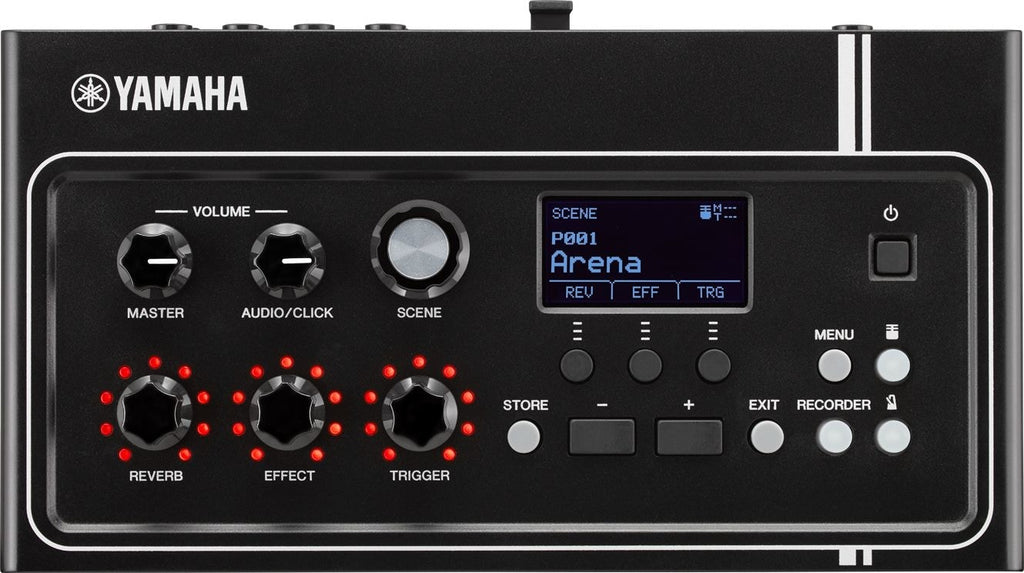
Phần chính của thiết lập kết hợp là mô-đun. Được biết đến như là bộ não của âm thanh trống điện tử của bạn, nó là nơi lưu trữ và tải lên tất cả các mẫu và mô-đun của bạn, đồng thời có thể dễ dàng kết nối nó với bộ trộn PA thông qua giắc cắm. Mô-đun trống chủ yếu có hai loại khác nhau – mô-đun kích hoạt trống và mô-đun trống tiêu chuẩn.
Các mô-đun kích hoạt trống được chế tạo đặc biệt để kích hoạt trống acoustic của bạn. Chúng có kích thước nhỏ hơn và thường bao gồm một vài bộ trống và mẫu được cài đặt sẵn. Hầu hết các mô-đun kích hoạt trống cung cấp cơ hội cho bạn sử dụng thẻ SD để lưu trữ mẫu bổ sung, mặc dù điều này không đúng với tất cả các mô-đun. Chúng cũng có xu hướng có một số lượng đầu ra nhỏ, khiến chúng trở thành lựa chọn hoàn hảo cho bất kỳ tay trống nào muốn tạo một thiết lập kết hợp nhỏ.
Được sử dụng cho bộ kích hoạt âm thanh và bộ điện tiêu chuẩn, mô-đun trống tiêu chuẩn có kích thước lớn hơn và có phạm vi đầu vào lớn hơn. Trong khi chúng làm điều tương tự như mô-đun kích hoạt trống, loại mô-đun này cung cấp khả năng kiểm soát sâu hơn đối với âm thanh của bạn, cho phép tạo ra bộ âm thanh chi tiết và chính xác hơn.
Các mô-đun trống cao cấp hơn có màn hình lớn hơn, thường cung cấp cái nhìn sâu hơn về phần nào của bộ công cụ mà bạn đang kích hoạt hoặc chỉnh sửa – để dễ sử dụng. Do tính chất của mô-đun trống này, nó có bộ nhớ lớn thuận tiện cùng với nhiều bộ công cụ và mẫu đặt trước.
Các mô-đun đi kèm với các tính năng khác nhau và tất cả đều ở các mức giá khác nhau. Hầu hết các mô-đun tiêu chuẩn đều có các tính năng cơ bản như điều khiển âm lượng, máy đánh nhịp và tùy chọn chuyển đổi giữa các mẫu khác nhau, nhưng bạn sẽ bắt đầu từ đâu khi quyết định mô-đun nào phù hợp với mình?
Mô -đun kích hoạt lai Roland TM-2 là một điểm khởi đầu tuyệt vời, có hai đầu vào cho các kích hoạt hoặc miếng đệm vùng kép và vùng đơn. TM-2 hoàn chỉnh với âm thanh đã tải lên đồng thời cung cấp thêm dung lượng lưu trữ qua thẻ nhớ SDHC. Với tùy chọn cho mặt bích reverb và delay, cùng với các hiệu ứng khác, TM-2 mang lại khả năng kiểm soát tốt đối với âm thanh của bạn. Lý tưởng cho một thiết lập nhỏ, mô-đun này là một điểm khởi đầu tuyệt vời, có mức giá hợp lý cho bất kỳ ai bắt đầu học các kỹ thuật đánh trống kết hợp.
Nếu bạn đang tìm kiếm một mô-đun kích hoạt trống cao cấp hơn, Roland TM-6 Pro tự hào có một loạt các tính năng hữu ích để mang lại khả năng kiểm soát tối ưu cho âm thanh của bạn. Mô-đun này có sáu đầu vào kích hoạt và thậm chí còn cung cấp chỗ để bạn áp dụng công tắc chân vào bộ công cụ của mình. Tính năng lấy mẫu người dùng cho phép bạn tạo lại âm thanh chính xác trong khi thay đổi âm lượng, cao độ và độ giảm dần, cho phép bạn điều chỉnh âm thanh mẫu cho phù hợp với môi trường phát.
Trống kết hợp có nhiều cách thiết lập khác nhau. Cho dù bạn chọn loại nào, hybrid chắc chắn có thể nâng cao khả năng chơi của bạn. Với nhiều âm thanh và mẫu khác nhau trong tầm tay của bạn hơn bao giờ hết, tính năng đánh trống kết hợp sẽ không chỉ đảm bảo rằng phần chơi của bạn thu hút được nhiều khán giả mà còn có khả năng nâng cao khả năng sáng tạo và cải thiện khả năng chơi của bạn. Có nhiều lợi ích đối với thiết lập kết hợp, từ việc vận chuyển dễ dàng và hiệu quả thiết lập cho đến việc cho phép bạn đạt được âm thanh và mẫu nhạc cụ mà bạn thường không có cơ hội sử dụng.
Xem thêm:
Cách Chọn Dùi Trống Theo Thể Loại, Kích Thước, Trọng Lượng
8 Thương Hiệu Trống Snare Tốt Nhất
10 Câu Hỏi Cần Có Trước Khi Mua Bộ Trống Đầu Tiên Của Bạn
10 Bộ Trống Tốt Nhất Cho Người Mới Học
10 Hãng Trống Tốt Nhất Thế Giới
